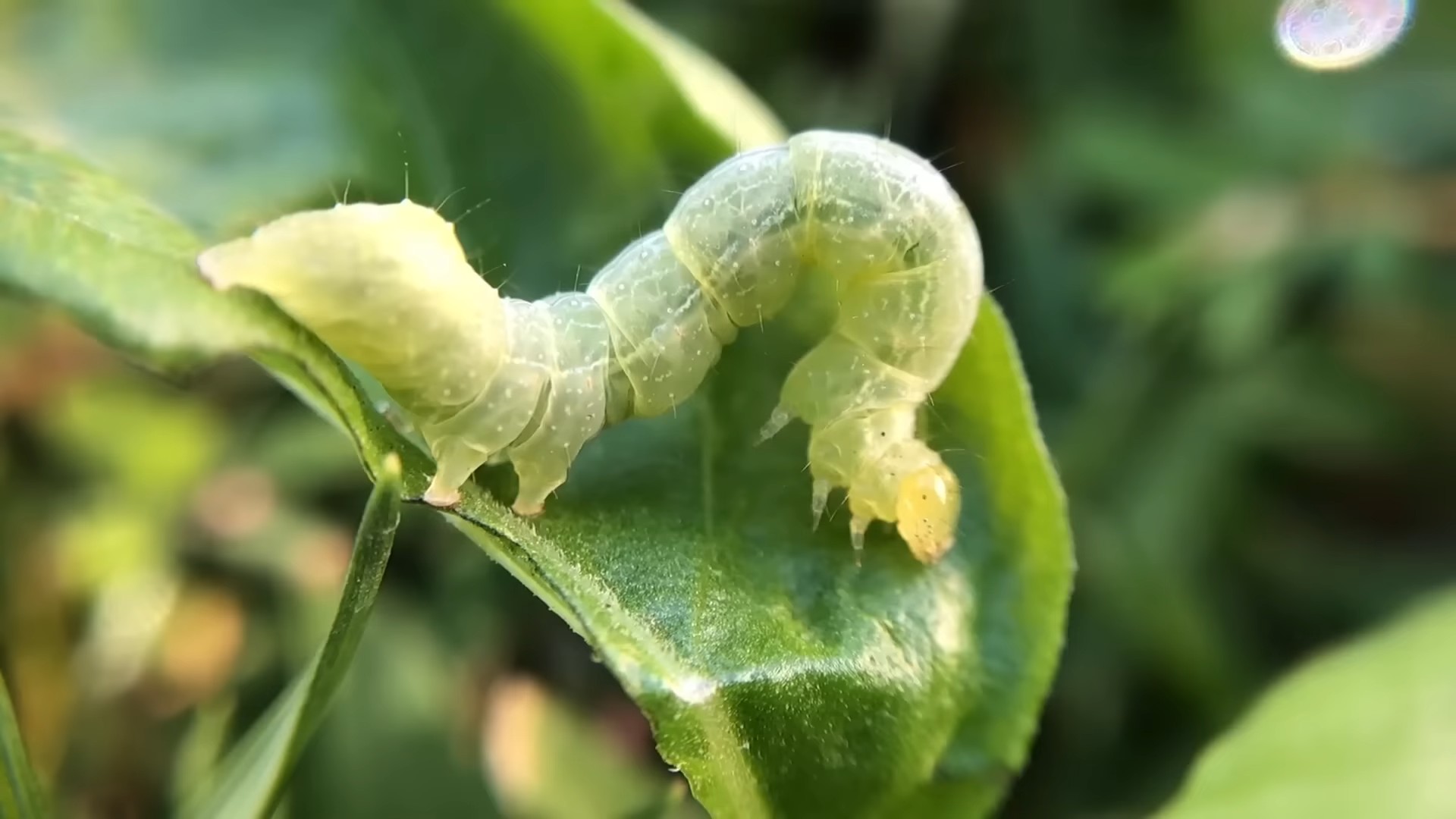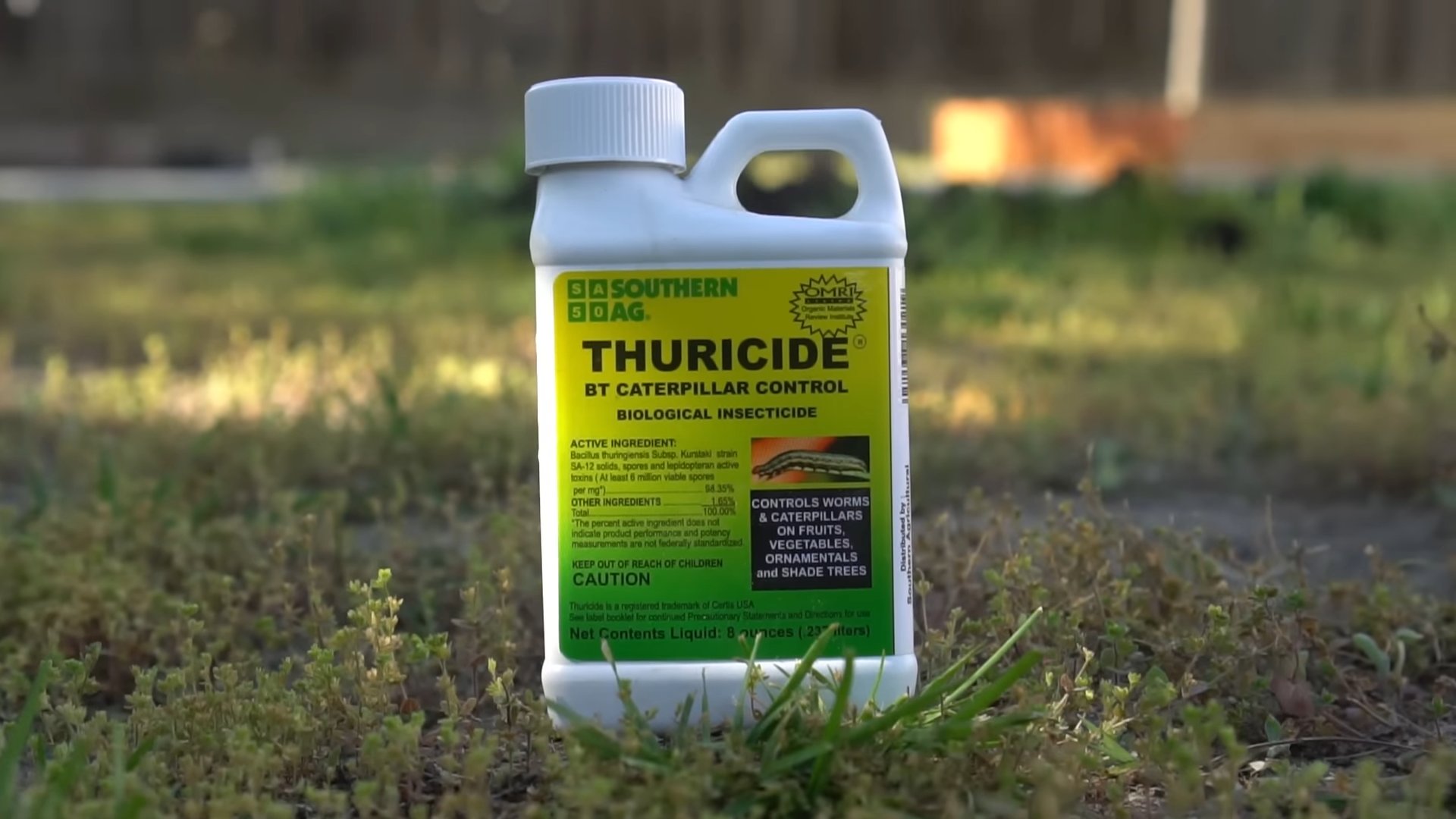Thuricide caterpillar control DIY: Are pesky caterpillars turning your beautiful garden into a buffet? Don’t despair! I know how frustrating it is to watch your hard work get devoured. For centuries, gardeners have battled these leaf-munching menaces, seeking effective and eco-friendly solutions. From ancient herbal remedies to modern organic methods, the quest for caterpillar control is a tale as old as gardening itself.
But what if I told you there’s a simple, effective, and DIY way to reclaim your garden from these hungry critters? This article will guide you through creating your own Thuricide caterpillar control DIY solution, using a readily available and naturally occurring bacteria called Bacillus thuringiensis (Bt). This method is a game-changer because it targets caterpillars specifically, leaving beneficial insects like bees and butterflies unharmed.
Why is this DIY trick so important? Because store-bought solutions can be expensive and sometimes contain harsh chemicals. With this easy-to-follow guide, you’ll save money, protect the environment, and finally enjoy a thriving, caterpillar-free garden. Let’s get started and take back our gardens, one caterpillar at a time!

DIY Thuricide Caterpillar Control: A Gardener’s Guide
Hey fellow gardeners! Are caterpillars turning your precious plants into a buffet? I know the feeling! It’s incredibly frustrating to watch your hard work get devoured. That’s why I’m sharing my go-to method for caterpillar control: using Thuricide, also known as Bacillus thuringiensis (Bt). It’s a natural, effective, and relatively safe way to protect your garden. Let’s dive in!
What is Thuricide (Bacillus thuringiensis)?
Before we get started, let’s understand what we’re working with. Thuricide is a brand name for a product containing Bacillus thuringiensis (Bt), a naturally occurring bacterium found in soil. Different strains of Bt target different insects. For caterpillar control, we’re looking for Bt kurstaki (Btk). When caterpillars ingest Btk, it paralyzes their digestive system, and they eventually starve. The best part? It’s relatively harmless to beneficial insects, birds, and mammals when used correctly.
Why Choose Thuricide?
I prefer Thuricide for several reasons:
* Targeted Action: It primarily affects caterpillars, leaving beneficial insects like bees and ladybugs relatively unharmed.
* Natural Solution: It’s a naturally occurring bacterium, making it a more environmentally friendly option than many synthetic pesticides.
* Effective Control: When applied correctly, it’s highly effective at controlling caterpillar populations.
* Relatively Safe: It’s considered safe for humans and pets when used according to the label instructions. Always read and follow the label!
Materials You’ll Need
* Thuricide Concentrate: Make sure it specifically targets caterpillars (look for Bt kurstaki or Btk on the label). I usually buy a concentrate that I can dilute with water.
* Spray Bottle or Garden Sprayer: A handheld spray bottle is fine for small gardens, but a garden sprayer with a wand is better for larger areas.
* Water: Clean, fresh water for diluting the Thuricide concentrate.
* Measuring Spoons or Cups: For accurate mixing.
* Gloves: To protect your hands.
* Eye Protection: Safety glasses or goggles are always a good idea when working with any spray.
* Optional: A small amount of insecticidal soap (this can help the Thuricide stick to the leaves better).
Mixing and Application: Step-by-Step Guide
This is the most important part! Getting the mixture right and applying it correctly is key to success.
1. Read the Label!
Seriously, read the label! This is the most crucial step. The instructions on the Thuricide concentrate will tell you the exact dilution ratio for your specific product. Different brands and formulations may have different instructions. The label is the law!
2. Prepare Your Mixing Container
Choose a clean spray bottle or garden sprayer. Make sure it’s free of any residue from previous chemicals. I usually rinse mine out thoroughly with water before each use.
3. Dilute the Thuricide Concentrate
This is where your measuring spoons or cups come in handy. The label will likely give you a dilution ratio, such as “1-2 teaspoons per gallon of water” or “1-2 tablespoons per gallon of water.”
* For a small spray bottle (e.g., 32 oz): If the label says 1 teaspoon per gallon, use about 1/4 teaspoon per 32 oz of water. If it says 2 teaspoons per gallon, use about 1/2 teaspoon per 32 oz of water.
* For a garden sprayer (e.g., 1 gallon): Follow the label instructions precisely. If it says 1 tablespoon per gallon, use 1 tablespoon. If it says 2 tablespoons per gallon, use 2 tablespoons.
Important: Always add the Thuricide concentrate to the water, not the other way around. This helps prevent clumping.
4. Add Insecticidal Soap (Optional)
If you’re using insecticidal soap, add a small amount (usually about 1 tablespoon per gallon of water) to the mixture. This helps the Thuricide stick to the leaves, especially if it’s going to rain.
5. Mix Thoroughly
Close the spray bottle or garden sprayer and shake it well to ensure the Thuricide and water are thoroughly mixed.
6. Test the Spray
Before spraying your entire garden, test the mixture on a small, inconspicuous area of one plant. This will help you ensure that the mixture isn’t too strong and won’t damage your plants. Wait 24 hours to see if there are any adverse effects.
7. Apply the Thuricide
Now for the fun part!
* Timing is Key: The best time to apply Thuricide is in the late afternoon or early evening. This is when caterpillars are most active. Avoid spraying during the heat of the day, as the mixture can evaporate quickly.
* Spray Thoroughly: Spray all parts of the affected plants, including the tops and undersides of the leaves. Caterpillars often hide on the undersides of leaves, so don’t forget to spray there!
* Don’t Overdo It: You don’t need to soak the plants. A light, even coating is sufficient.
* Focus on Infested Areas: Pay special attention to areas where you’ve seen caterpillars or signs of caterpillar damage (e.g., chewed leaves, droppings).
8. Reapply as Needed
Thuricide breaks down relatively quickly, especially in sunlight and rain. You’ll likely need to reapply it every 7-10 days, or after a heavy rain. Keep an eye on your plants and reapply whenever you see new caterpillar activity.
Tips for Success
Here are a few extra tips to help you get the most out of your Thuricide treatment:
* Identify the Caterpillar: While Thuricide is generally effective against most caterpillars, knowing the specific type of caterpillar you’re dealing with can help you tailor your approach. Some caterpillars are more resistant to Bt than others.
* Early Detection is Key: The sooner you start treating for caterpillars, the better. Smaller caterpillars are easier to control than larger ones.
* Combine with Other Methods: Thuricide is a great tool, but it’s not a magic bullet. Consider combining it with other caterpillar control methods, such as handpicking caterpillars off plants, using row covers to prevent moths from laying eggs, and encouraging natural predators like birds and parasitic wasps.
* Store Thuricide Properly: Store Thuricide concentrate in a cool, dry place, away from direct sunlight and out of reach of children and pets.
* Don’t Spray on Windy Days: Avoid spraying Thuricide on windy days, as the spray can drift and affect non-target plants or insects.
* Be Patient: It may take a few days for the Thuricide to take effect. Don’t expect to see caterpillars dropping dead immediately.
Safety Precautions
While Thuricide is considered relatively safe, it’s still important to take precautions:
* Wear Gloves and Eye Protection: Protect your skin and eyes from contact with the concentrate.
* Avoid Inhalation: Try not to breathe in the spray.
* Wash Your Hands: Wash your hands thoroughly with soap and water after handling Thuricide.
* Keep Away from Food and Drink: Don’t eat, drink, or smoke while applying Thuricide.
* Keep Children and Pets Away: Keep children and pets away from treated areas until the spray has dried.
* Follow Label Instructions: Always follow the label instructions carefully.
Troubleshooting
* Caterpillars Still Eating My Plants: If you’re still seeing caterpillar damage after applying Thuricide, make sure you’re applying it correctly and frequently enough. Also, consider whether the caterpillars are resistant to Bt or if you’re dealing with a different type of pest.
* Plants Damaged After Spraying: If you notice any damage to your plants after spraying, it’s possible that the mixture was too strong. Dilute the Thuricide concentrate further next time.
* Spray Bottle Clogged: If your spray bottle gets clogged, try cleaning it with water and a small brush. Make sure the Thuricide concentrate is thoroughly mixed before spraying.
Alternative Caterpillar Control Methods
While I rely on Thuricide, it’s good to know other options:
* Handpicking: This is tedious but effective for small infestations. Just pluck the caterpillars off and drop them in a bucket of soapy water.
* Row Covers: These physical barriers prevent moths from laying eggs on your plants.
* Diatomaceous Earth (DE): This natural powder can dehydrate caterpillars.
* Insecticidal Soap: Effective against young caterpillars.
* Neem Oil: A broad-spectrum insecticide that can also control caterpillars.
* Attract Natural Predators: Plant flowers that attract beneficial insects like ladybugs, lacewings, and parasitic wasps, which prey on caterpillars.
Final Thoughts

Conclusion
So, there you have it! This simple, effective, and budget-friendly DIY Thuricide caterpillar control solution is a game-changer for any gardener battling those leaf-munching pests. We’ve walked you through the process, highlighting the ease of preparation and the environmentally conscious nature of using Bacillus thuringiensis (Bt) – the active ingredient in Thuricide – to protect your precious plants.
Why is this a must-try? Because it works! Forget about harsh chemical pesticides that can harm beneficial insects and potentially contaminate your garden. This DIY approach allows you to target caterpillars specifically, leaving the rest of your ecosystem thriving. Plus, you’ll save money by mixing your own solution, and you’ll have the satisfaction of knowing exactly what you’re putting on your plants.
But the beauty of this DIY Thuricide caterpillar control method lies in its adaptability. Feel free to experiment with variations to suit your specific needs and preferences. For instance, if you’re dealing with a particularly stubborn infestation, you might consider increasing the concentration of Thuricide slightly, always keeping in mind the manufacturer’s recommendations. Alternatively, you could add a small amount of horticultural oil to your spray mixture. This will help the solution adhere to the leaves better, providing longer-lasting protection, especially after rain. Remember to test any variations on a small area of your plant first to ensure there are no adverse reactions.
Another variation to consider is the timing of your application. Caterpillars are most vulnerable when they are young and actively feeding. Therefore, regular monitoring of your plants is crucial. Look for signs of caterpillar activity, such as chewed leaves, droppings (frass), or the caterpillars themselves. Applying your DIY Thuricide solution early in the morning or late in the evening, when caterpillars are most active, will maximize its effectiveness.
Furthermore, consider the type of sprayer you use. A fine mist sprayer will provide even coverage, ensuring that all parts of the plant are treated. For larger plants or infestations, a pump sprayer might be more efficient. Regardless of the sprayer you choose, make sure to clean it thoroughly after each use to prevent clogging.
This DIY Thuricide caterpillar control method is not just about eliminating pests; it’s about fostering a healthy and balanced garden ecosystem. By using a targeted and environmentally friendly approach, you’re protecting your plants while also supporting beneficial insects and other wildlife.
We are confident that this DIY solution will become an indispensable part of your gardening arsenal. Don’t let caterpillars ruin your hard work and dedication. Take control of your garden and protect your plants with this simple, effective, and environmentally responsible method.
So, go ahead, give it a try! We’re eager to hear about your experiences. Share your results, tips, and variations in the comments below. Let’s build a community of gardeners who are committed to protecting their plants in a sustainable and effective way. Your feedback will not only help other gardeners but also contribute to refining this DIY Thuricide caterpillar control method even further. Happy gardening!
Frequently Asked Questions (FAQ)
What exactly is Thuricide, and how does it work?
Thuricide is a brand name for a biological insecticide that contains Bacillus thuringiensis (Bt), a naturally occurring bacterium found in soil. Bt produces proteins that are toxic to certain insects, particularly caterpillars. When caterpillars ingest Bt, the proteins disrupt their digestive system, causing them to stop feeding and eventually die. The great thing about Thuricide is that it’s highly specific to certain insects, meaning it won’t harm beneficial insects like bees, ladybugs, or lacewings. It’s a safe and effective way to control caterpillars without resorting to harsh chemical pesticides.
Is Thuricide safe for humans, pets, and other wildlife?
Yes, Thuricide is generally considered safe for humans, pets, and other wildlife when used according to the manufacturer’s instructions. Bt is a naturally occurring bacterium and is not known to be toxic to mammals, birds, fish, or most beneficial insects. However, as with any pesticide, it’s always a good idea to take precautions. Avoid direct contact with the spray solution, and wash your hands thoroughly after application. Keep pets and children away from treated areas until the spray has dried. While Thuricide is considered safe, some individuals may experience mild skin or eye irritation. If this occurs, rinse the affected area with water.
How often should I apply the DIY Thuricide caterpillar control solution?
The frequency of application depends on the severity of the infestation and the weather conditions. In general, you should apply the solution every 7-10 days, or more frequently if you notice new caterpillar activity. Rain can wash away the solution, so you may need to reapply it after a heavy rainfall. Regularly inspect your plants for signs of caterpillars, such as chewed leaves or droppings, and apply the solution as needed. Remember that caterpillars are most vulnerable when they are young, so early detection and treatment are key.
Can I use this DIY Thuricide solution on all types of plants?
Yes, this DIY Thuricide solution can be used on a wide variety of plants, including vegetables, fruits, flowers, and trees. However, it’s always a good idea to test the solution on a small area of the plant first to ensure there are no adverse reactions. Some plants may be more sensitive to the solution than others. If you notice any signs of damage, such as leaf burn or discoloration, discontinue use.
How long does it take for Thuricide to kill caterpillars?
Thuricide doesn’t kill caterpillars instantly. After ingesting the Bt, caterpillars will stop feeding within a few hours. They will then become sluggish and eventually die within 2-5 days. It’s important to note that you may still see caterpillars on your plants for a few days after application, but they will no longer be actively feeding and causing damage.
What are the best times of day to apply the DIY Thuricide solution?
The best times of day to apply the DIY Thuricide solution are early in the morning or late in the evening. This is when caterpillars are most active and feeding. Applying the solution during these times will maximize its effectiveness. Avoid applying the solution during the heat of the day, as it can evaporate quickly and may cause leaf burn.
How should I store the Thuricide concentrate and the mixed solution?
Store the Thuricide concentrate in a cool, dry place, away from direct sunlight and extreme temperatures. Keep it out of reach of children and pets. The mixed solution should be used immediately. Do not store the mixed solution for extended periods, as the Bt bacteria can degrade over time, reducing its effectiveness. If you have any leftover solution, dispose of it properly according to local regulations.
What if I don’t see results after applying the DIY Thuricide solution?
If you don’t see results after applying the DIY Thuricide solution, there could be several reasons. First, make sure you are using the correct concentration of Thuricide. Follow the manufacturer’s instructions carefully. Second, ensure that you are applying the solution thoroughly and evenly, covering all parts of the plant. Third, consider the timing of your application. Caterpillars are most vulnerable when they are young, so early detection and treatment are key. Finally, make sure that the caterpillars you are targeting are susceptible to Bt. Thuricide is most effective against caterpillars, but it may not work on other types of pests. If you are still having problems, consult with a local gardening expert or extension service for further assistance.
Can I use Thuricide in conjunction with other pest control methods?
Yes, Thuricide can be used in conjunction with other pest control methods, such as handpicking caterpillars, using row covers, or introducing beneficial insects. However, avoid using Thuricide with other chemical pesticides, as this can reduce its effectiveness and potentially harm beneficial insects. A holistic approach to pest control, combining different methods, is often the most effective way to manage caterpillar infestations.
Where can I purchase Thuricide?
Thuricide is widely available at garden centers, nurseries, and online retailers. Look for products that contain Bacillus thuringiensis (Bt) as the active ingredient. There are different strains of Bt that are effective against different types of insects, so make sure to choose a product that is specifically labeled for caterpillar control.





Leave a Comment